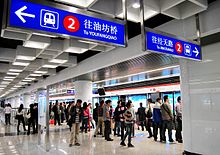About the City-Nanjing
Geography
Nanjing, with a total land area of 6,598 square kilometres (2,548 sq mi), is situated in one of the largest economic zones of China, the Yangtze River Delta, which is part of the downstream Yangtze River drainage basin. The Yangtze River flows past the west side of Nanjing City, while the Ningzheng Ridge surrounds the north, east and south side of the city. The city is 300 kilometres (190 mi) west-northwest of Shanghai, 1,200 kilometres (750 mi) south-southeast of Beijing, and 1,400 kilometres (870 mi) east-northeast of Chongqing.

Nanjing borders Yangzhou to the northeast, one town downstream when following the north bank of the Yangtze, Zhenjiang to the east, one town downstream when following the south bank of the Yangtze, and Changzhou to the southeast. On its western boundary is Anhui province, where Nanjing borders five prefecture-level cities.
Nanjing is the intersection of Yangtze River—an east-west water transport artery and Nanjing–Beijing railway—a south-north land transport artery, hence the name “door of the east and west, throat of the south and north”. Furthermore, the west part of the Ningzhen range is in Nanjing; the Loong-like Zhong Mountain is curling in the east of the city; the tiger-like Stone Mountain is crouching in the west of the city, hence the name “the Zhong Mountain, a dragon curling, and the Stone Mountain, a tiger crouching”. Mr. Sun Yet-sen spoke highly of Nanjing in the “Constructive Scheme for Our Country”, “The position of Nanjing is wonderful since mountains, lakes and plains all integrated in it. It is hardly [sic] to find another city like this.”
Climate and environment
Nanjing has a humid subtropical climate (K?ppen Cfa) and is under the influence of the East Asia Monsoon. The four seasons are distinct here, with damp conditions seen throughout the year, very hot and muggy summers, cold, damp winters, and in between, spring and autumn are of reasonable length. Along with Wuhan and Chongqing, Nanjing is traditionally referred to as one of the "Three Furnacelike Cities" along the Yangtze River (长江流域三大火炉) for the perennially high temperatures in the summertime. However, the time from mid-June to the end of July is the plum blossom blooming season in which the meiyu (rainy season of East Asia; literally "plum rain") occurs, during which the city experiences a period of mild rain as well as dampness. Typhoons are uncommon but possible in the late stages of summer and early part of autumn. The annual mean temperature is around 15.5 °C (59.9 °F), with monthly 24-hour averages ranging from 2.4 to 27.8 °C (36.3 to 82 °F). The highest recorded temperature is 43.0 °C (109 °F), and the lowest ?16.9 °C (2 °F). On average precipitation falls 115 days out of the year, and the average annual rainfall is 1,062 millimetres (42 in).
Nanjing is endowed with rich natural resources, which include more than 40 kinds of minerals. Among them, iron and sulfur reserves make up 40 percent of those of Jiangsu province. Its reserves of strontium rank first in East Asia and the South East Asia region. Nanjing also possesses abundant water resources, both from the Yangtze River and groundwater. In addition, it has several natural hot springs such as Tangshan Hot Spring in Jiangning and Tangquan Hot Spring in Pukou.
Surrounded by the Yangtze River and mountains, Nanjing also enjoys beautiful natural scenery. Natural lakes such as Xuanwu Lake and Mochou Lake are located in the centre of the city and are easily accessible to the public, while hills like Purple Mountain are covered with evergreens and oaks and host various historical and cultural sites. Sun Quan relocated his capital to Nanjing after Liu Bei's suggestion as Liu Bei was impressed by Nanjing's impeccable geographic position when negotiating an alliance with Sun Quan. Sun Quan then renamed the city from Moling (秣陵) to Jianye (建邺) shortly thereafter.
Transportation
Nanjing is the transportation hub in eastern China and the downstream Yangtze River area. Different means of transportation constitute a three-dimensional transport system that includes land, water and air. As in most other Chinese cities, public transportation is the dominant mode of travel of the majority of the citizens. The city now has four bridge or tunnel crossings spanning the Yangtze, which are tying districts north of the river with the city centre on the south bank. See also Transport in Nanjing.
Rail
Nanjing is an important railway hub in eastern China. It serves as rail junction for the Beijing-Shanghai (Jinghu) (which is itself composed of the old Jinpu and Huning Railways), Nanjing–Tongling (Ningtong), Nanjing-Qidong (Ningqi), and the Nanjing-Xian (Ningxi) which encompasses the Hefei–Nanjing Railway.
Nanjing is connected to the national high-speed railway network by Beijing–Shanghai High-Speed Railway and Shanghai–Wuhan–Chengdu Passenger Dedicated Line, with several more high-speed rail lines under construction.
Among all 17 railway stations in Nanjing, passenger rail service is mainly provided by Nanjing Railway Station and Nanjing South Railway Station, while other stations like Nanjing West Railway Station, Zhonghuamen Railway Station and Xianlin Railway Station serve minor roles. Nanjing South Railway Station, which is one of the 5 hub stations on Beijing-Shanghai High-Speed Railway, has officially been claimed as the largest railway station in Asia and the second largest in the world in terms of GFA (Gross Floor Area).
Public transportation
Xinjiekou Station of Line 2, Nanjing Metro
The city also boasts an efficient network of public transportation, which mainly consists of bus, taxi and metro systems. The bus network, which is currently run by five companies (Nanjing Gongjiao, Zhongbei, Argos, Xincheng and Xinningpu), provides more than 370 routes covering all parts of the city and suburban areas. Nanjing Metro Line 1, started service on May 15, 2005. Line 2 and the extension of Line 1 officially opened to passenger service on May 28, 2010. The city is planning to complete a 655 km (407 mi) long Metro and light-rail system by 2030.[citation needed] The expansion of the Metro network will greatly facilitate the intracity transportation and reduce the currently heavy traffic congestion.
Airline
Nanjing's airport, Lukou International Airport, serves both national and international flights. In 2010, the airport handled 12.5305 million passengers. It was ranked 14th among 126 civil airports in China in terms of yearly passenger transport, and 10th for yearly cargo transport. The airport currently has 85 routes to national and international destinations, which include Japan, Korea, Thailand, Malaysia, Singapore and Germany. The airport is connected by a 29-kilometre (18 mi) highway directly to the city center, and is also linked to various intercity highways, making it accessible to the passengers from the surrounding cities.
civil airports in China in terms of yearly passenger transport, and 10th for yearly cargo transport. The airport currently has 85 routes to national and international destinations, which include Japan, Korea, Thailand, Malaysia, Singapore and Germany. The airport is connected by a 29-kilometre (18 mi) highway directly to the city center, and is also linked to various intercity highways, making it accessible to the passengers from the surrounding cities.
Culture and art
Being one of the four ancient capitals of China, Nanjing has always been a cultural centre attracting intellectuals from all over the country. In the Tang and Song dynasties, Nanjing was a place where poets gathered and composed poems reminiscent of its luxurious past; during the Ming and Qing Dynasties, the city was the official imperial examination centre (Jiangnan Examination Hall) for the Jiangnan region, again acting as a hub where different thoughts and opinions converged and thrived.
Some of the leading art groups of China are based in Nanjing; they include the Qianxian Dance Company, Nanjing Dance Company, Jiangsu Peking Opera Institute and Nanjing Xiaohonghua Art Company among others.
Jiangsu Province Kun Opera is one of the best theatres for Kunqu, China's oldest stage art. It is considered a conservative and traditional troupe. Nanjing also has professional opera troupes for the Yang, Yue (shaoxing), Xi and Jing (Chinese opera varieties) as well as Suzhou pingtan, spoken theatre and puppet theatre.
Jiangsu Art Gallery is the largest gallery in Jiangsu Province, presenting some of the best traditional and contemporary art pieces of China; many other smaller-scale galleries, such as Red Chamber Art Garden and Jinling Stone Gallery, also have their own special exhibitions.
Today, with a long cultural tradition and strong support from local educational institutions, Nanjing is commonly viewed as a “city of culture” and one of the more pleasant cities to live in China.
Food & Symbolism
The radish is also a typical food representing people of Nanjing, which has been spread through word of mouth as a interesting fact for many years in China. According to Nanjing.GOV.CN, "There is a long history of growing radish in Nanjing especially the southern suburb. In the spring, the radish tastes very juicy and sweet. It is well-known that people in Nanjing like eating radish. And the people are even addressed as 'Nanjing big radish', which means they are unsophisticated, passionate and conservative. From health perspective, eating radish can help to offset the stodgy food that people take during the Spring Festival"

